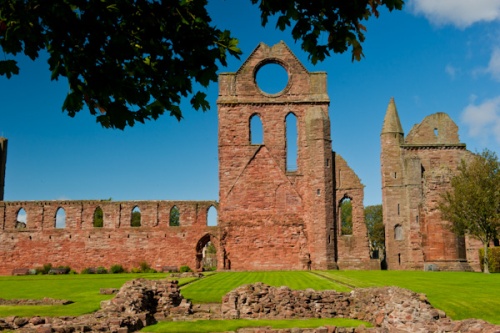
The most interesting historical attraction in Arbroath is Arbroath Abbey, a 12th-century priory founded by William the Lion. William is buried in the sacristy of the abbey. Unlike abbeys in England, Arbroath was not intentionally dissolved, but rather, it gradually fell into disuse and decay, and the former abbey gatehouse was later turned to use as a museum.
The abbey had a more recent moment in the spotlight in 1951. On 11 April of that year the Stone of Destiny (aka the Stone of Scone) which had been stolen from Westminster Abbey by Scottish nationalists, was surrendered by the thieves and placed on the altar of Arbroath Abbey. The stone was returned to London, though it has since been 'repatriated' once again to Scotland.
The shoreline near Arbroath is known for its caves, which riddle the red sandstone cliffs. There is a tall sea stack known as Pitt Stoup. By the harbour is the Arbroath Tower Museum, housed in elegant 18th-century buildings designed by famed architect Robert Stevenson as a shore station for the lighthouse keepers of Bell Rock, 11 miles offshore. The museum traces the local history of Arbroath and area and displays artefacts from the lighthouse itself.
 We've 'tagged' this attraction information to help you find related historic attractions and learn more about major time periods mentioned.
We've 'tagged' this attraction information to help you find related historic attractions and learn more about major time periods mentioned.




